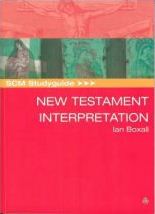

This introduction to the interpretation of Matthew aims to encourage grappling with the theological and historical questions raised by the text, by providing a 'map' to the Gospel as a whole, and to key interpreters and interpretative debates. It draws on a range of methodological approaches (author-, text- and reader-centred), including the recent scholarly interest in reception history, as complementary rather than mutually exclusive ways of interpreting the text.
Learn More
This monograph explores the significance accorded to John's island of Patmos (Rev. 1:9) within the wider reception history of the Apocalypse. It brings together for the first time in a coherent narrative a wide range of interpretations of Patmos (in sermons, liturgy and visual art as well as biblical commentaries), reflecting different chronological periods, cultural contexts, and Christian traditions.
Learn More
This textbook offers an up-to-date, accessible introduction to the main areas tackled in introductory New Testament courses, such as the contents and diversity of the New Testament, how the texts came to be written and collected, their relationship to Jesus of Nazareth, and the nature of the canon. In particular, it introduces the main interpretative approaches used by scholars in an accessible way, and helping the student apply them to specific New Testament passages.
Learn MoreArising out of a critical awareness of the historical and theological issues surrounding the interpretation of Revelation, this commentary addresses the first century context of this difficult book, takes seriously its visionary nature, and emphasizes its author's Patmos context. Attending to the overall structure of the work, Boxall engages with the Apocalypse's rich and varied reception history.
Learn More